
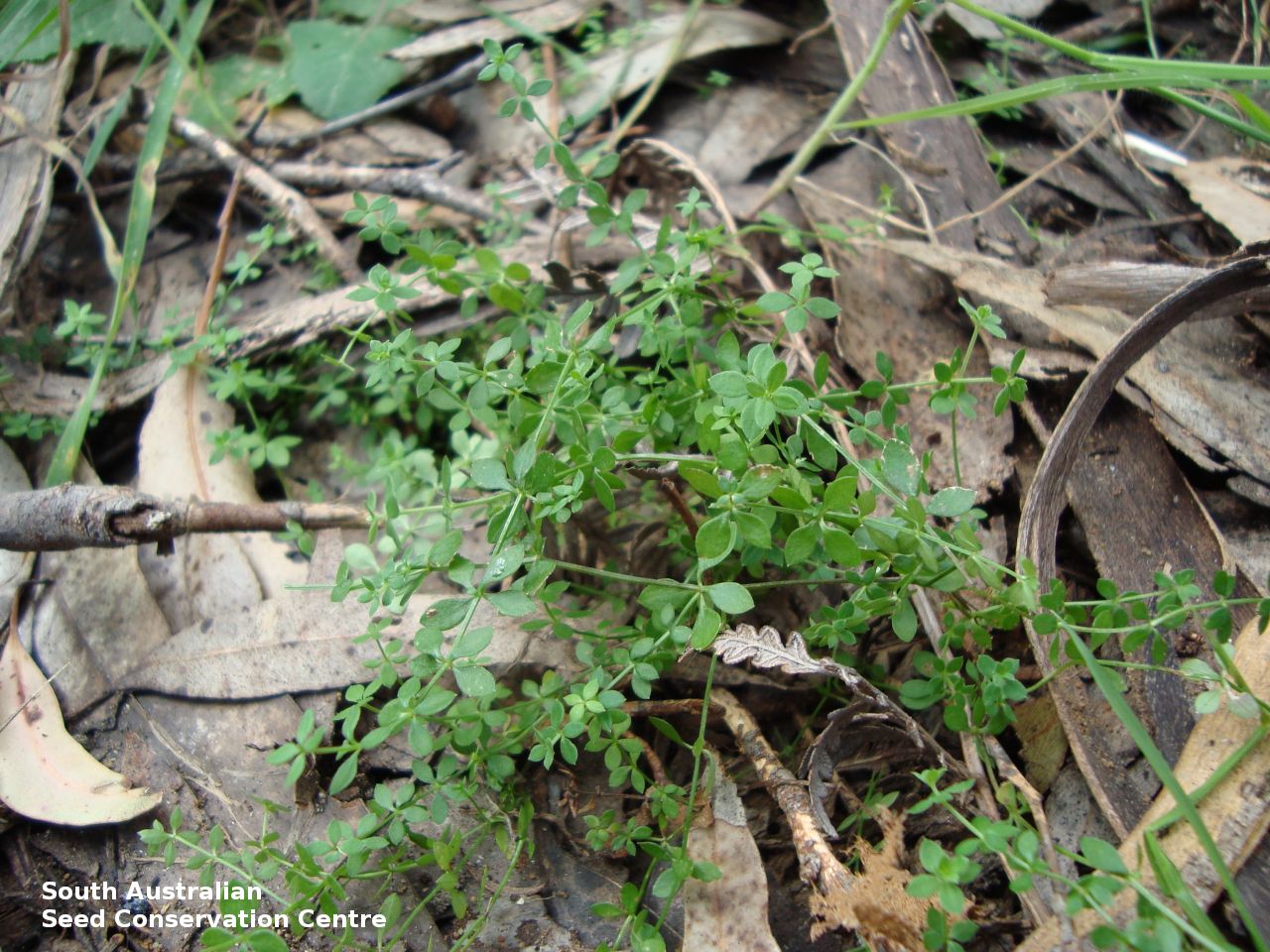
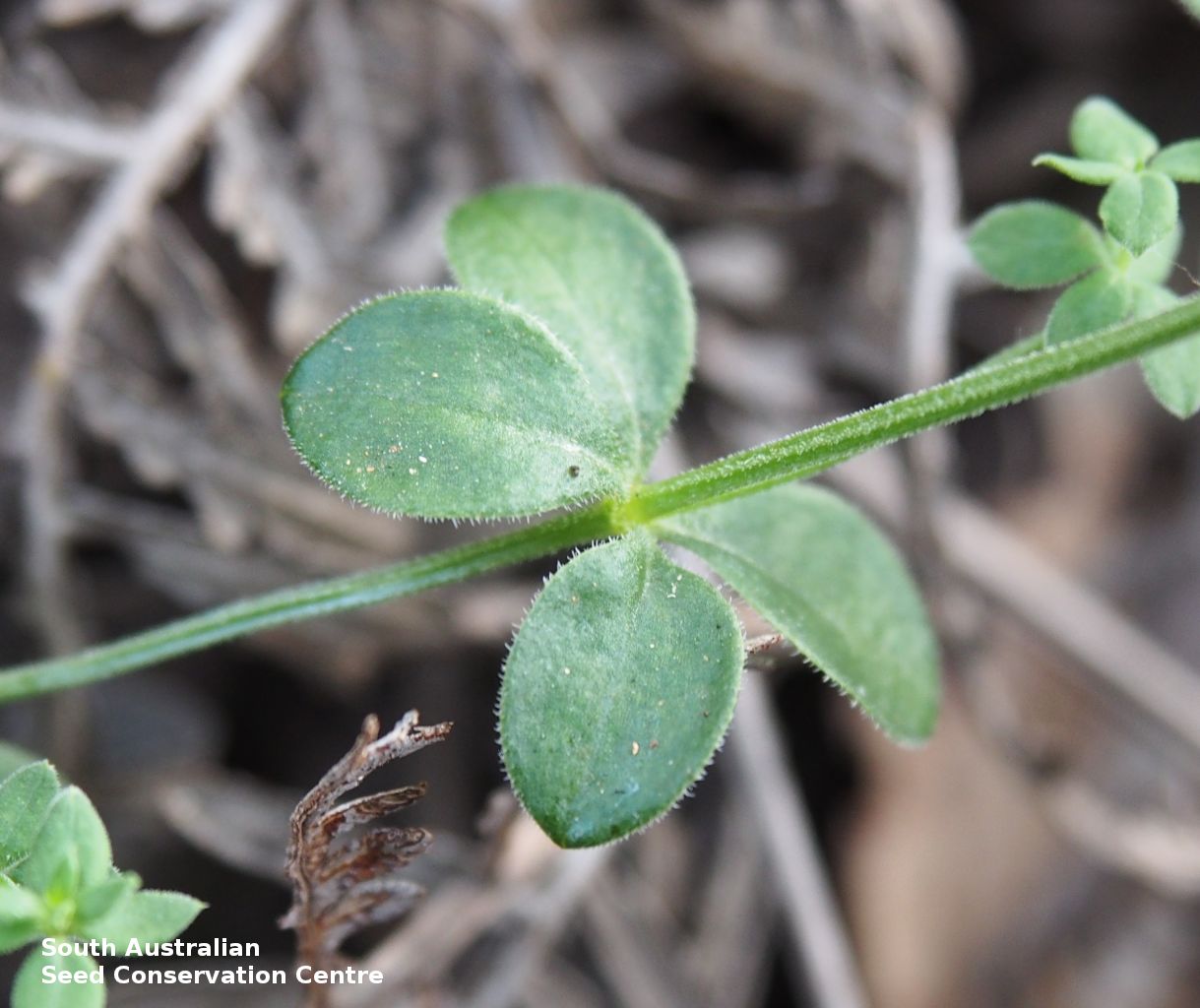
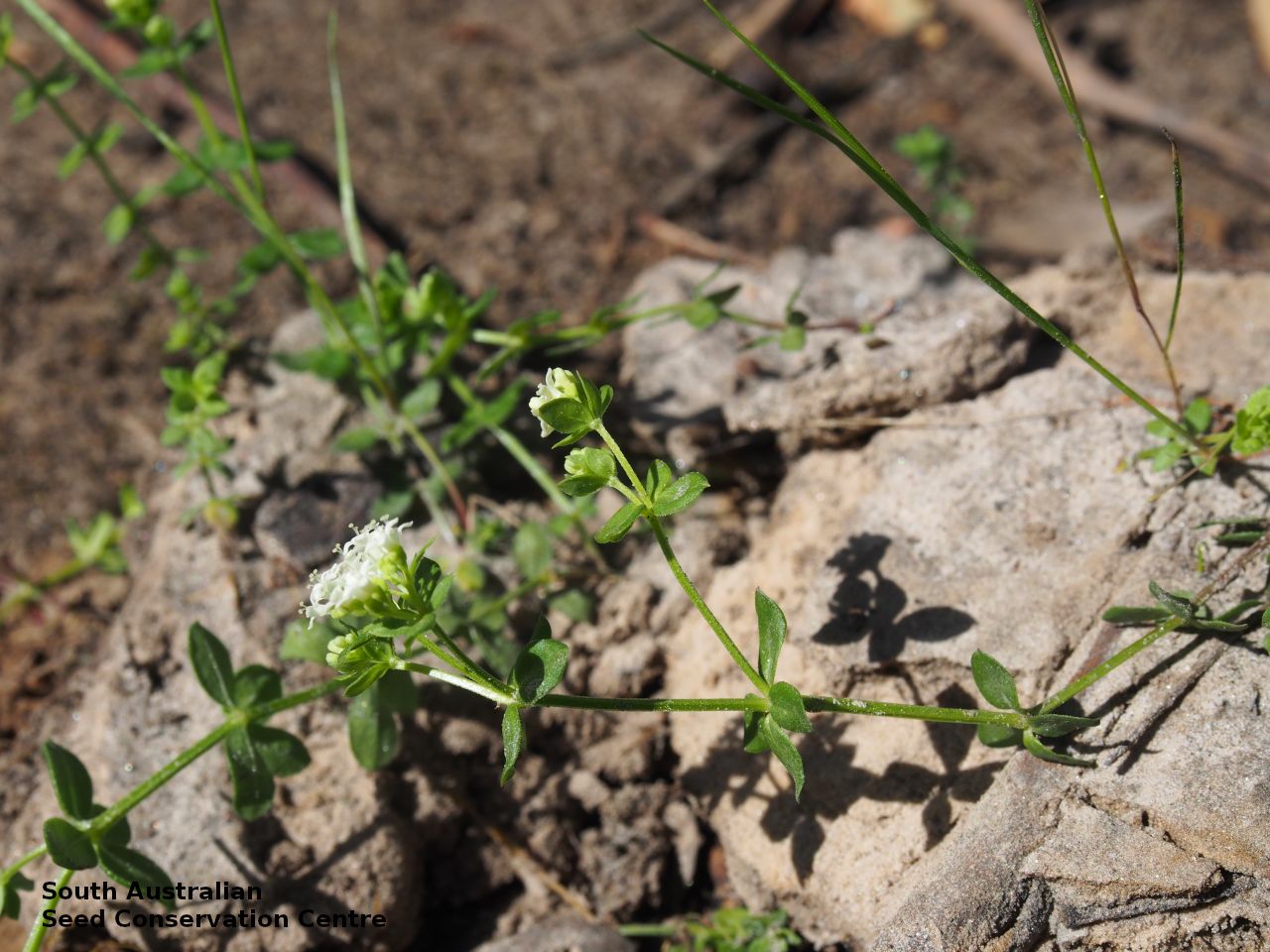
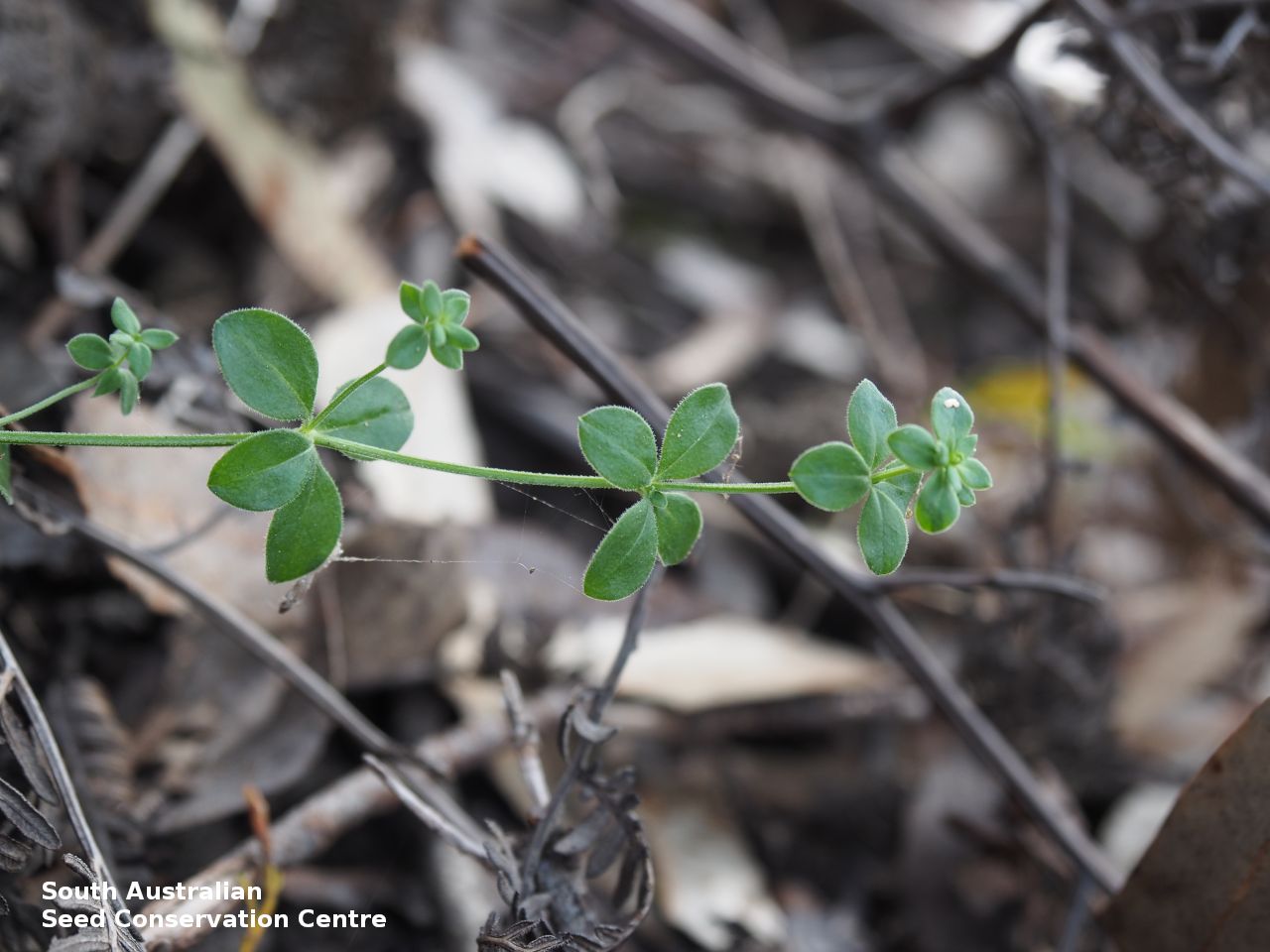
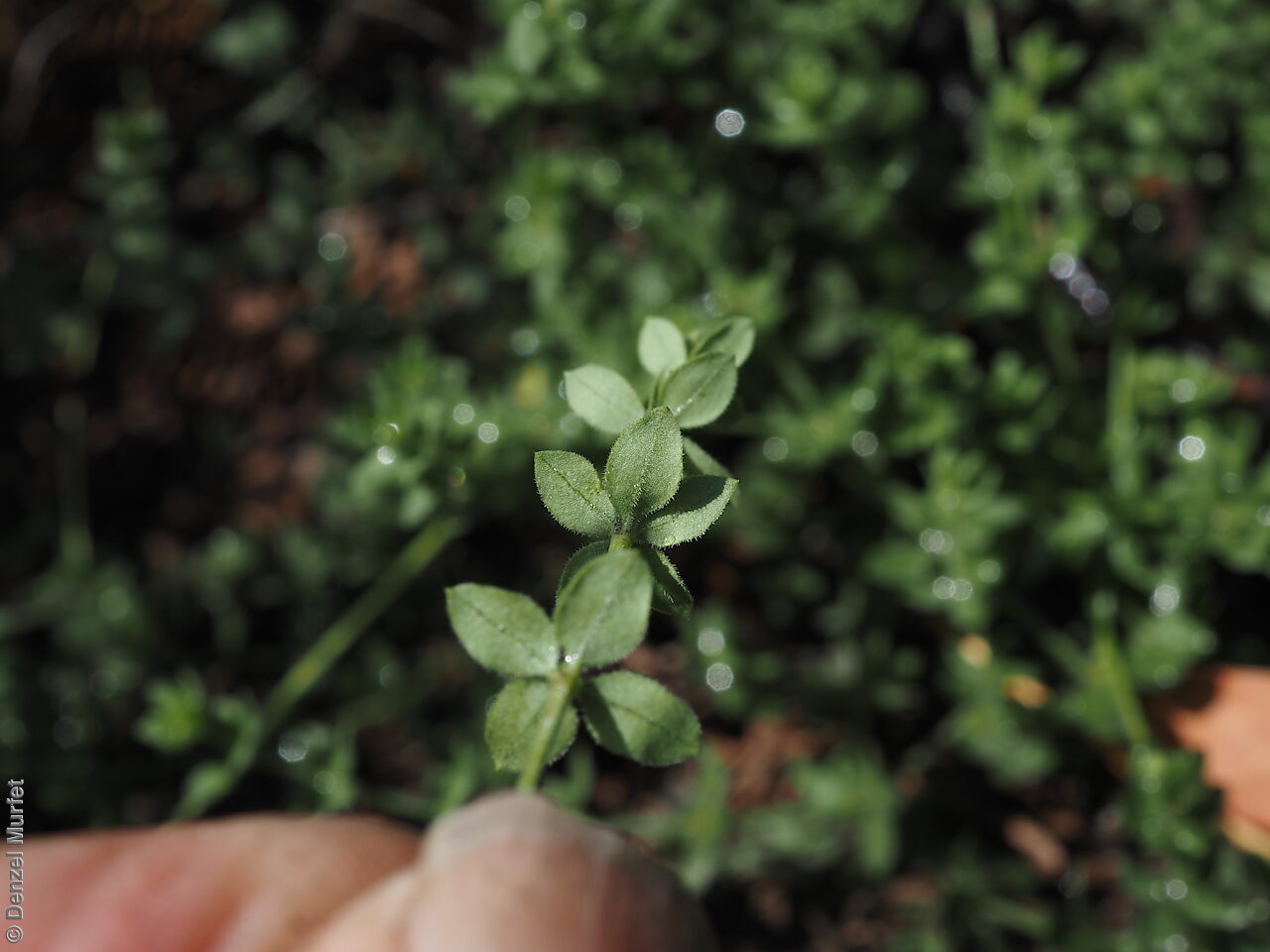
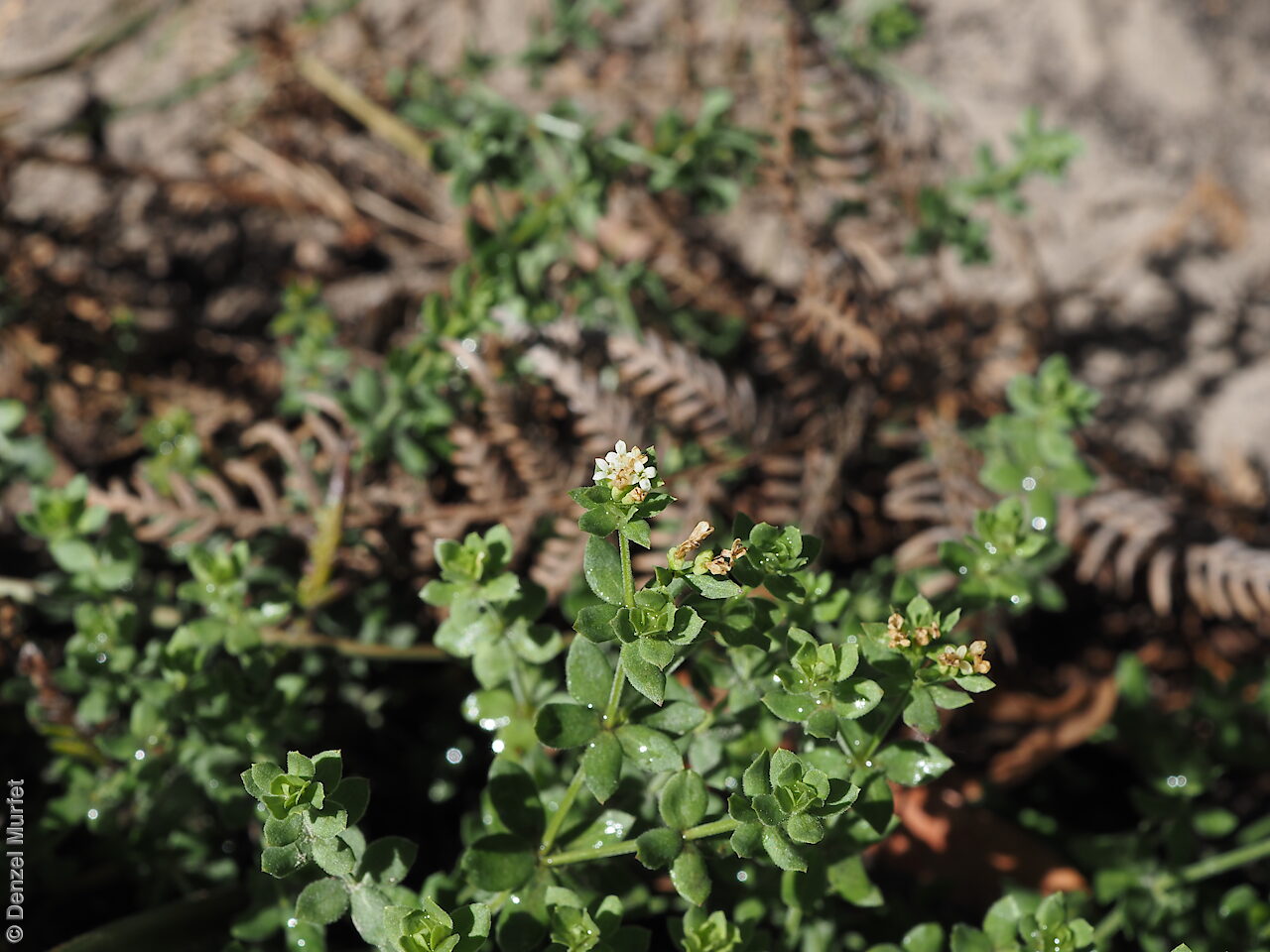
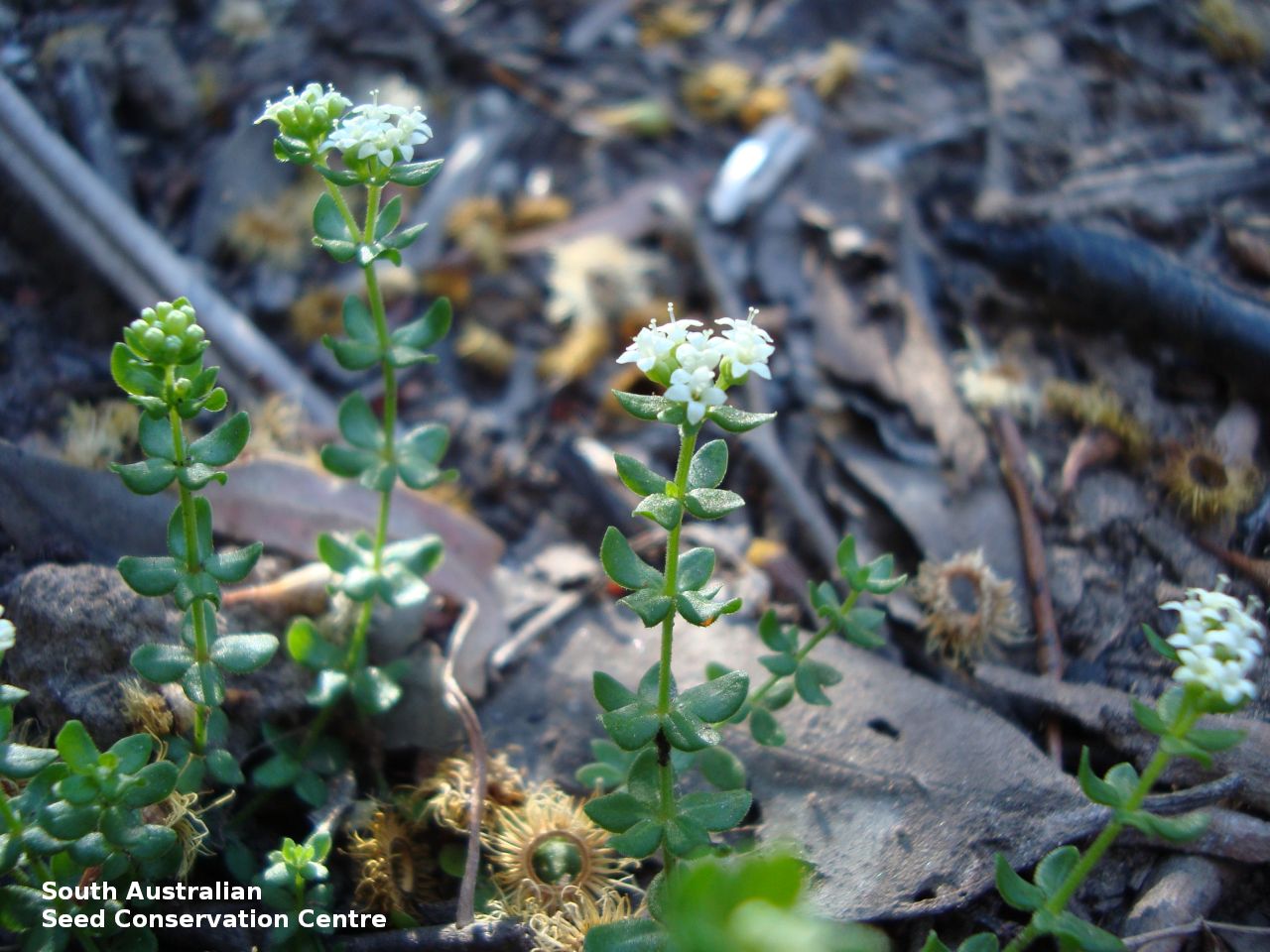
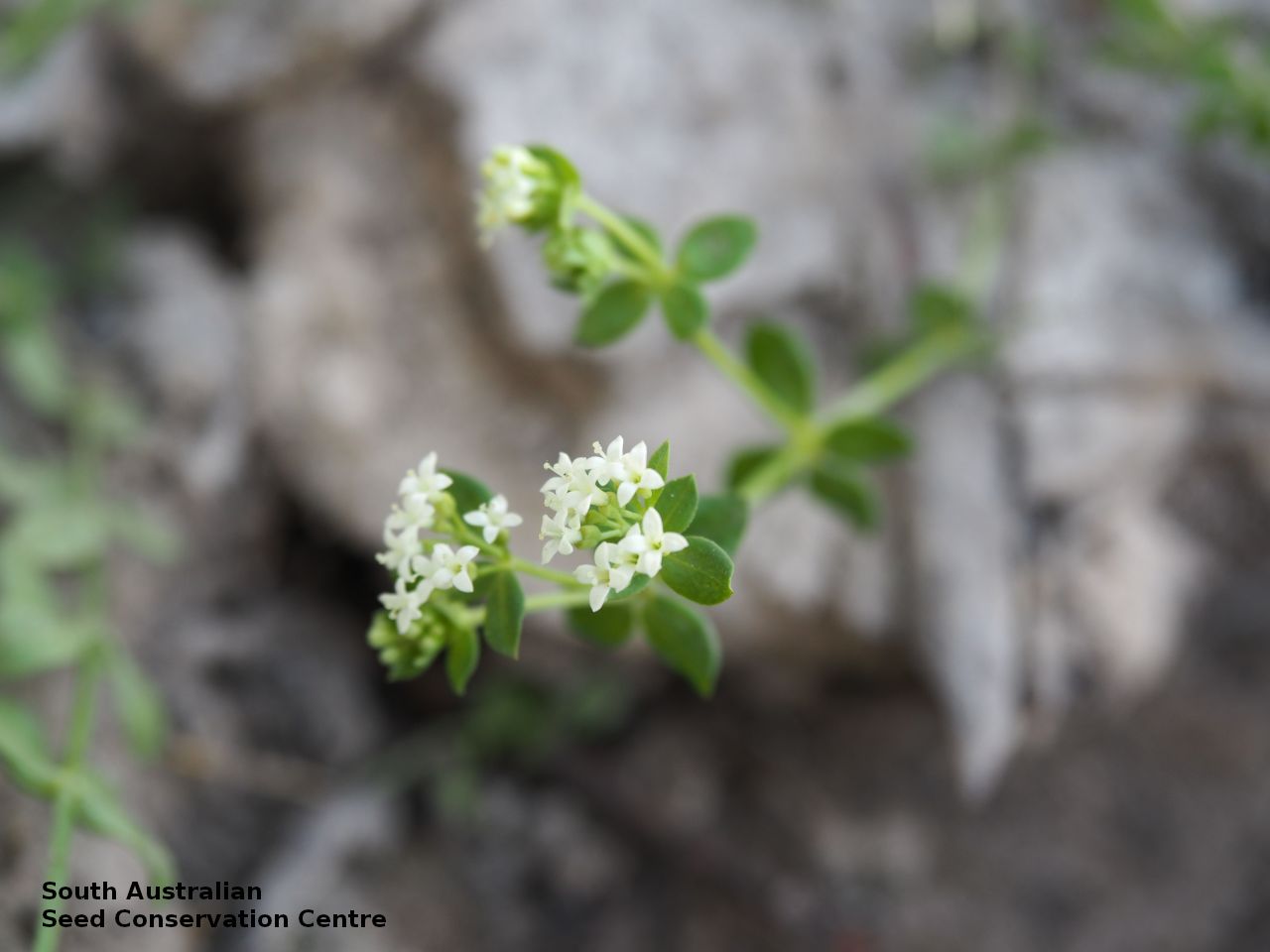
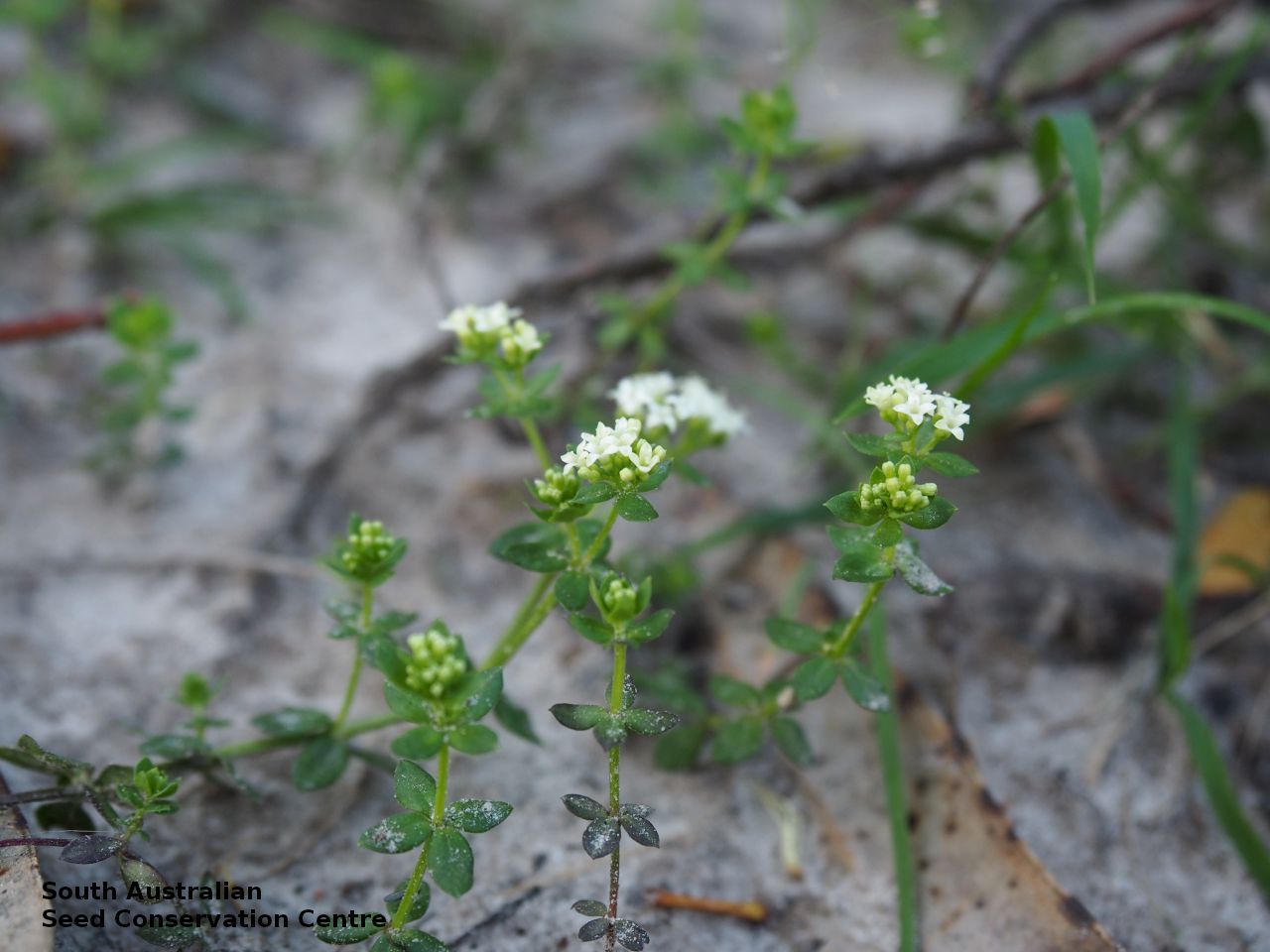
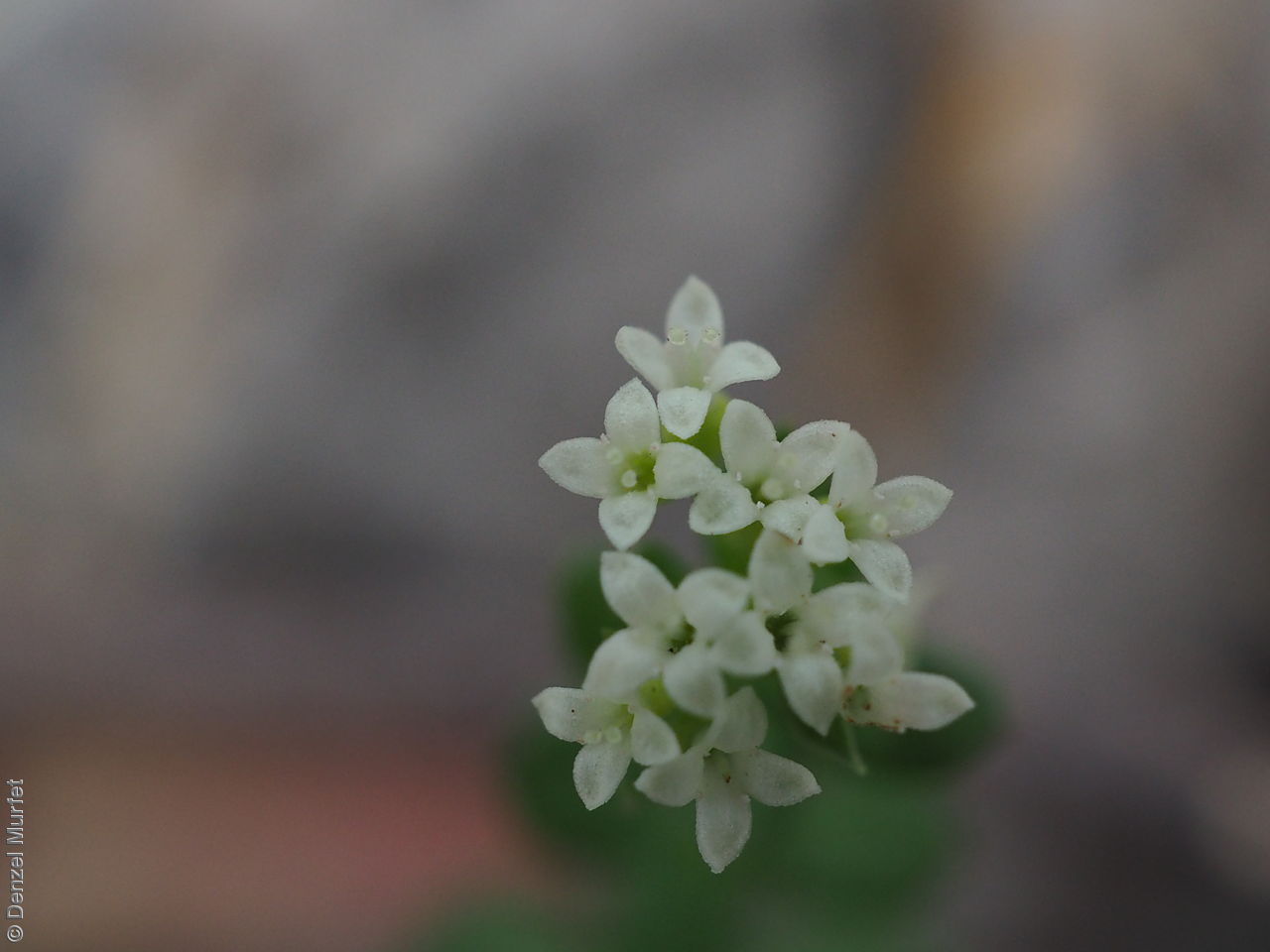
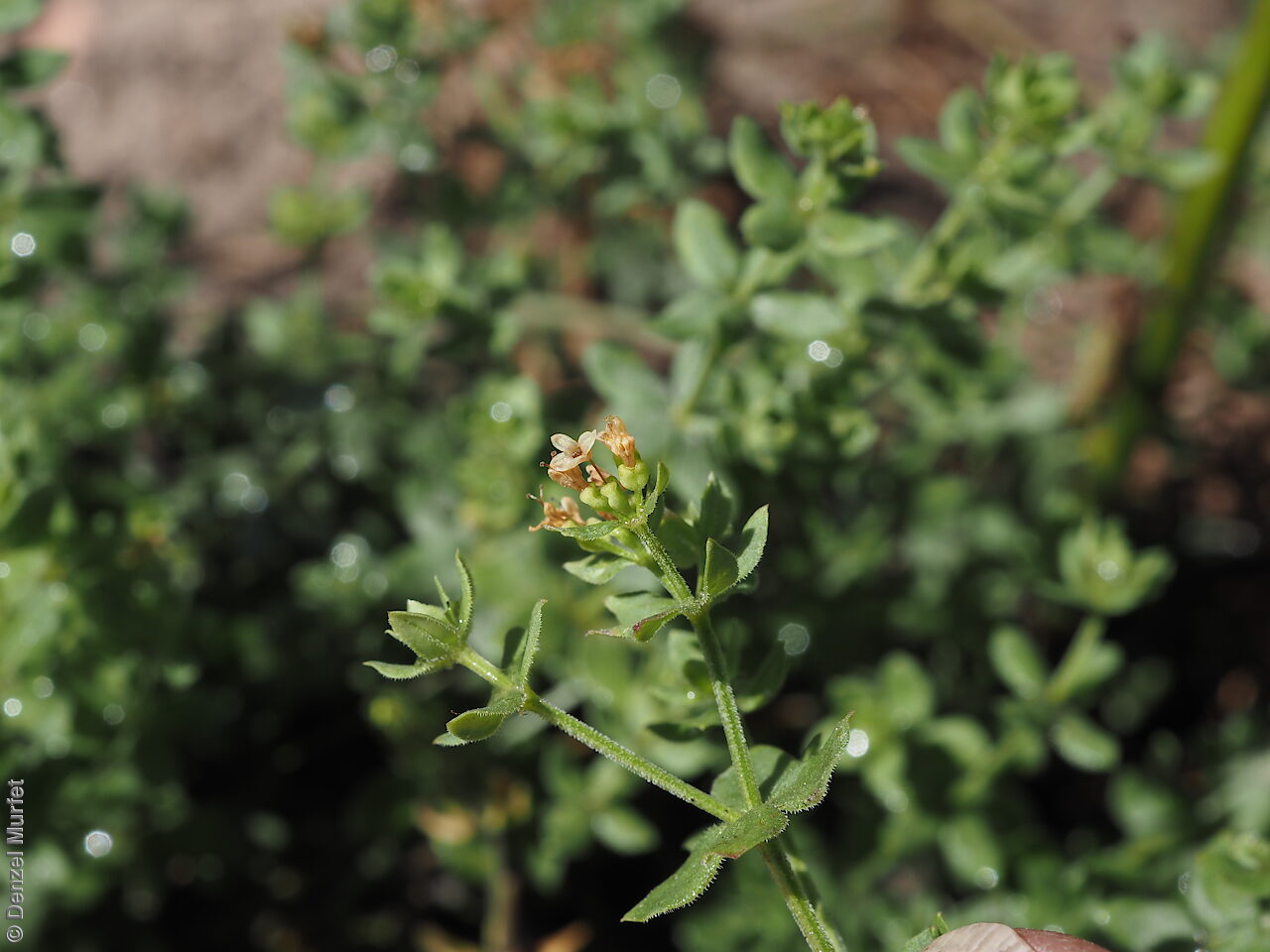
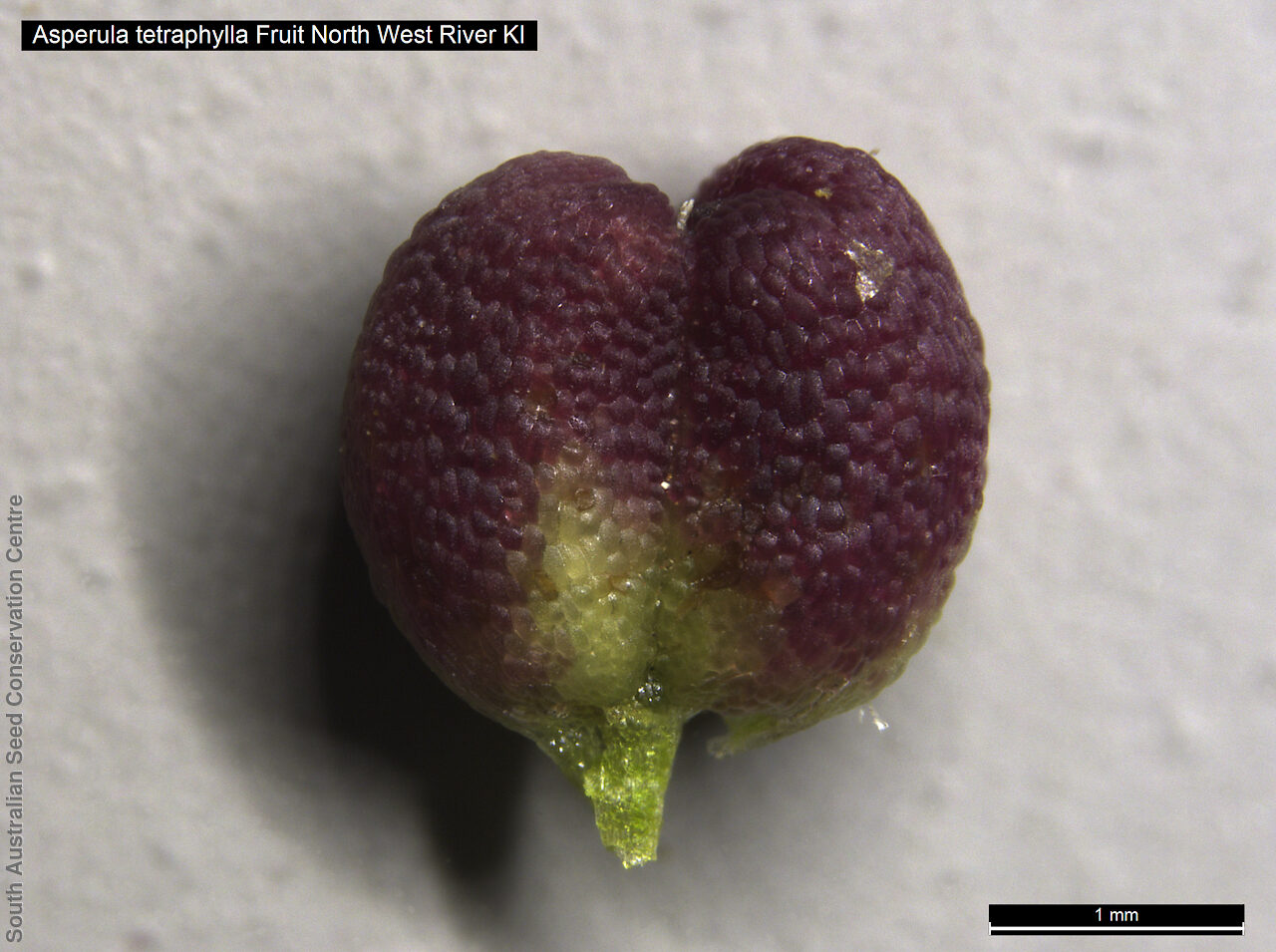
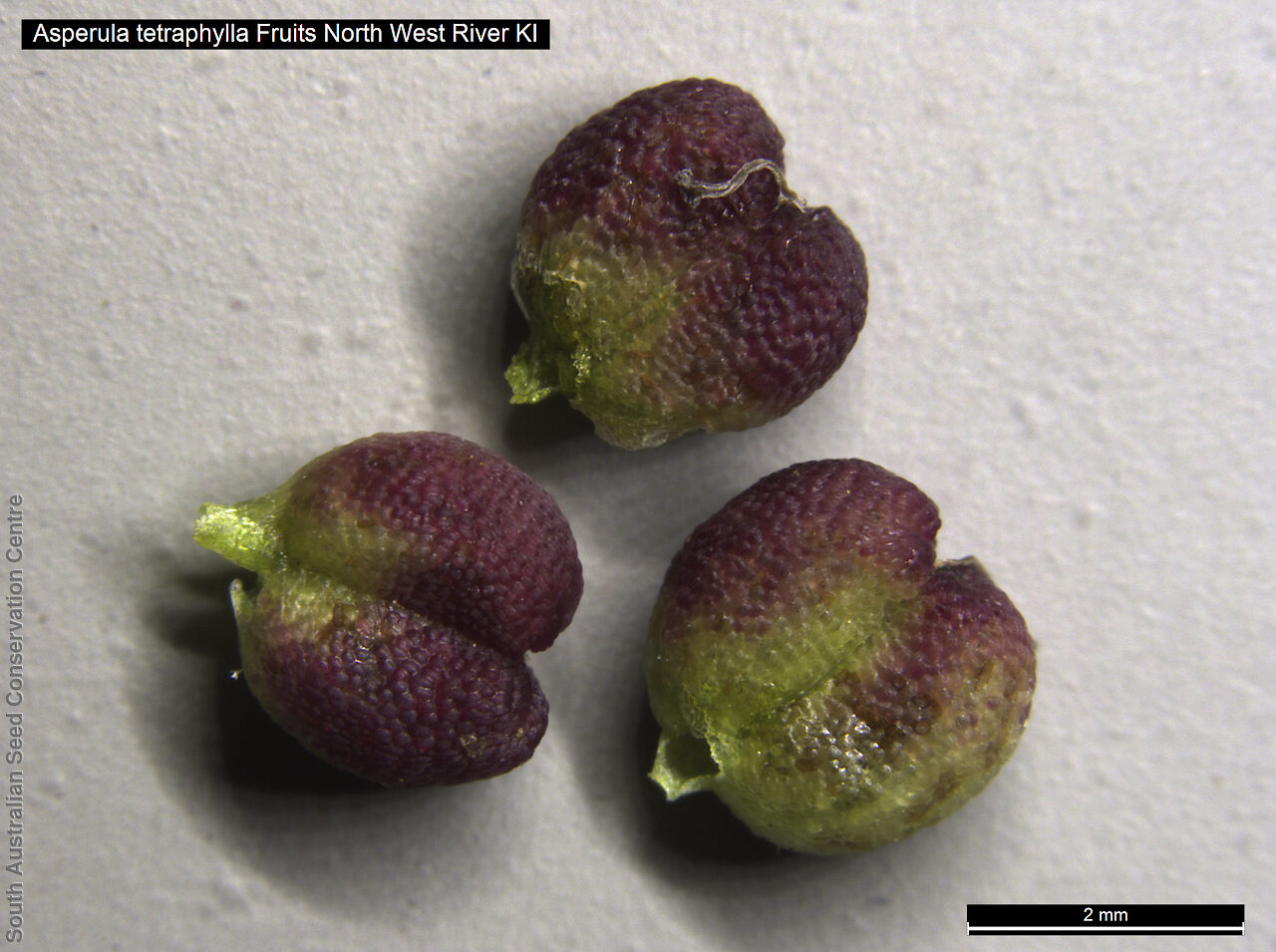
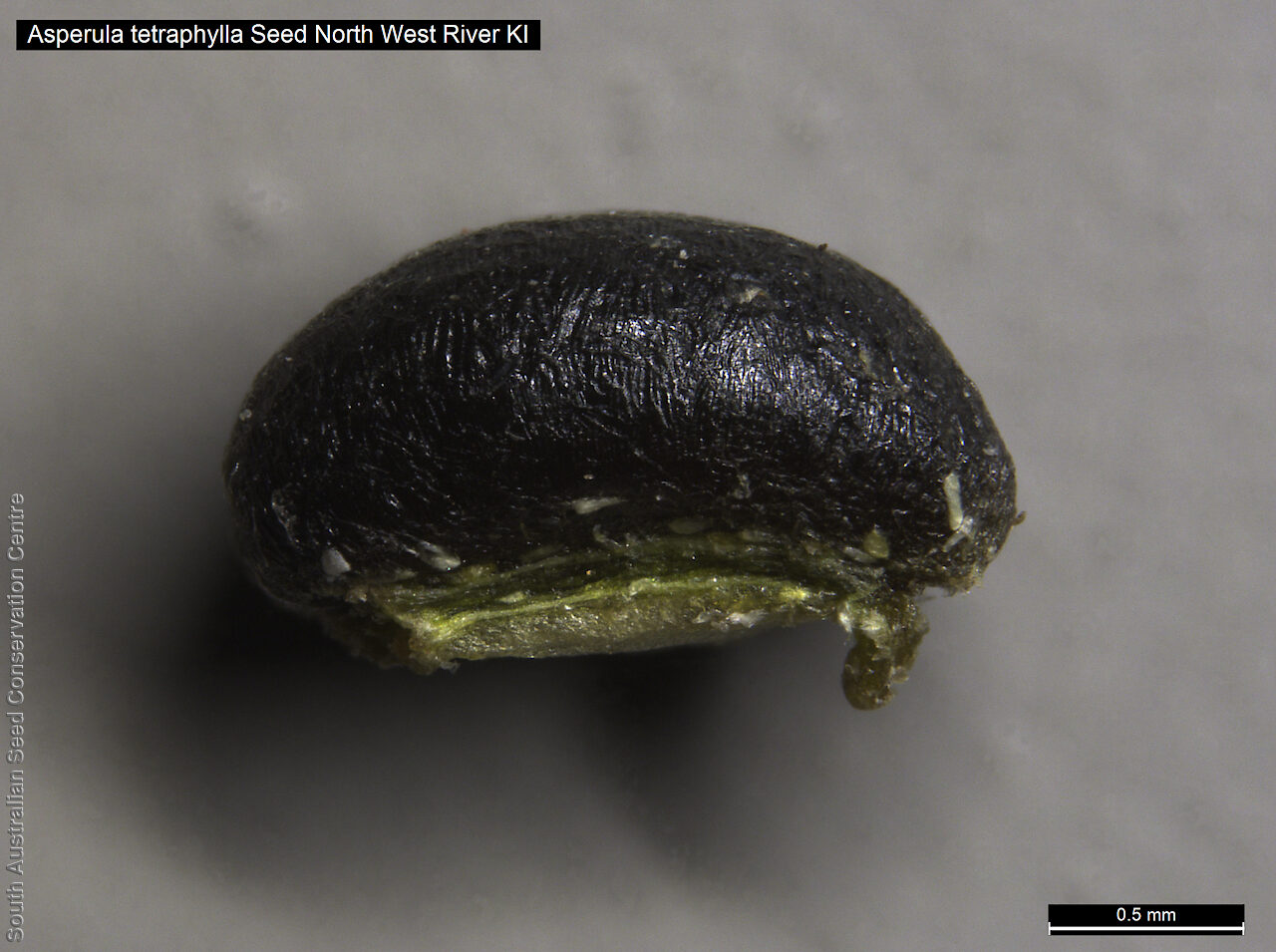
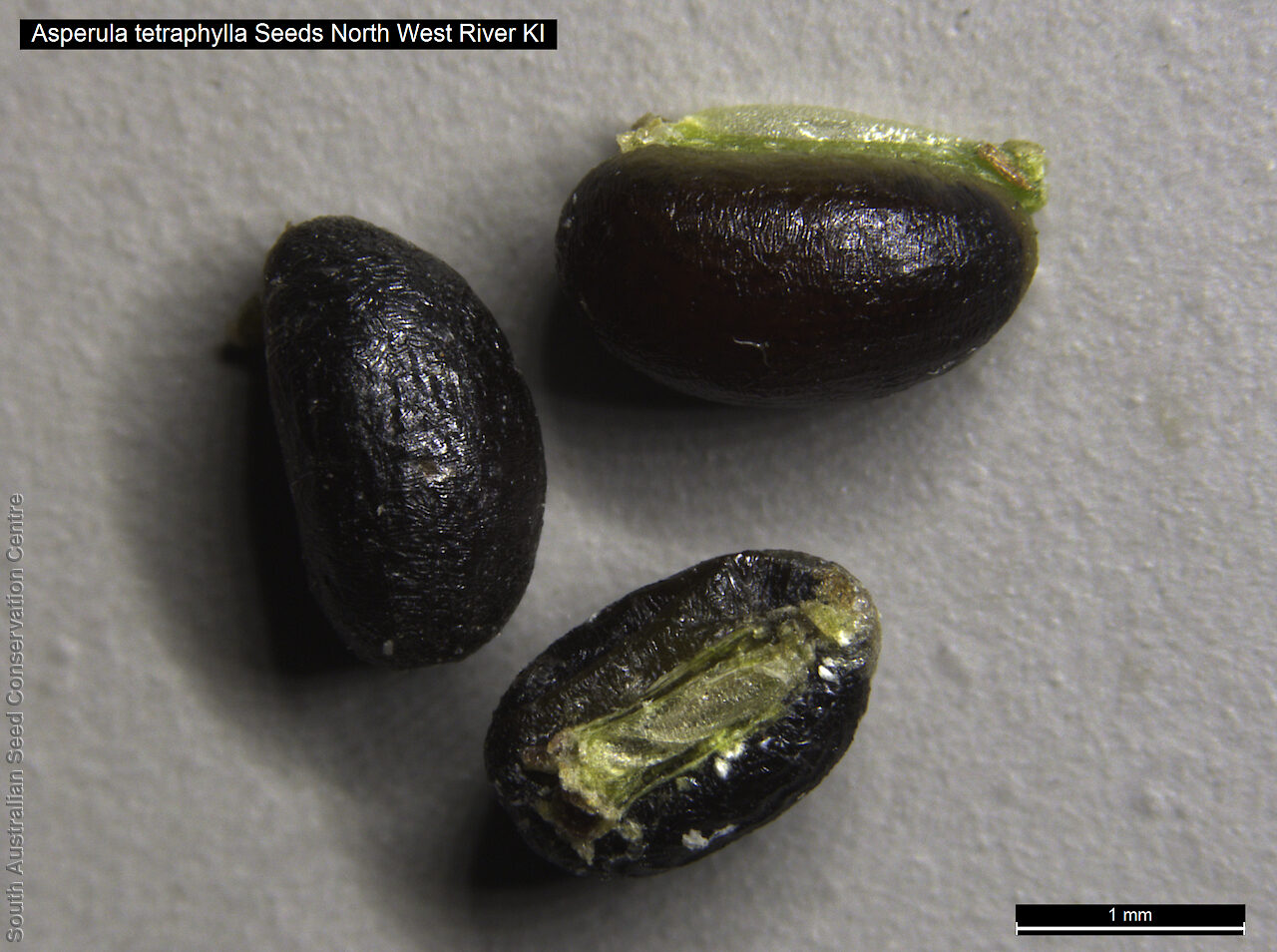
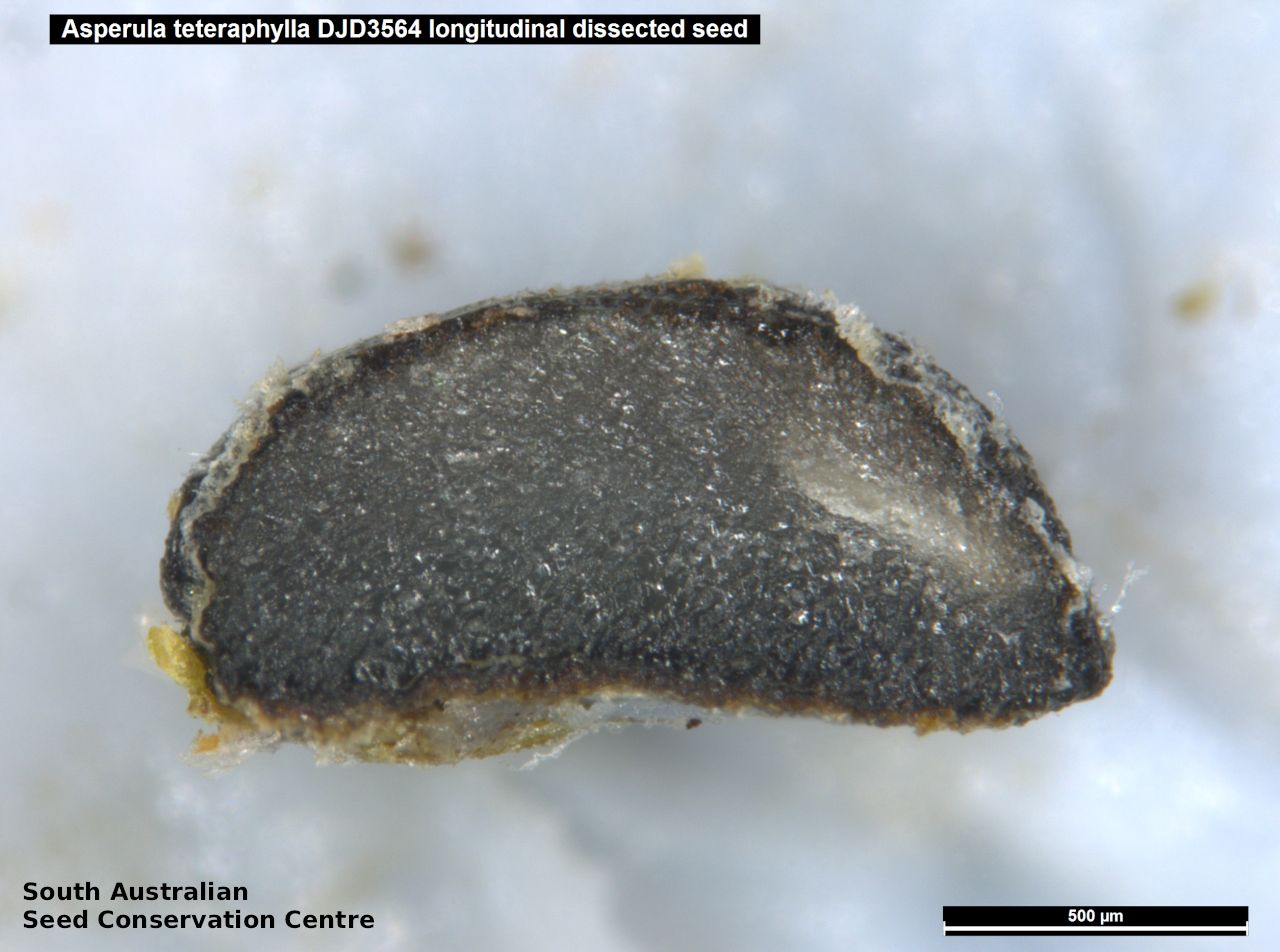
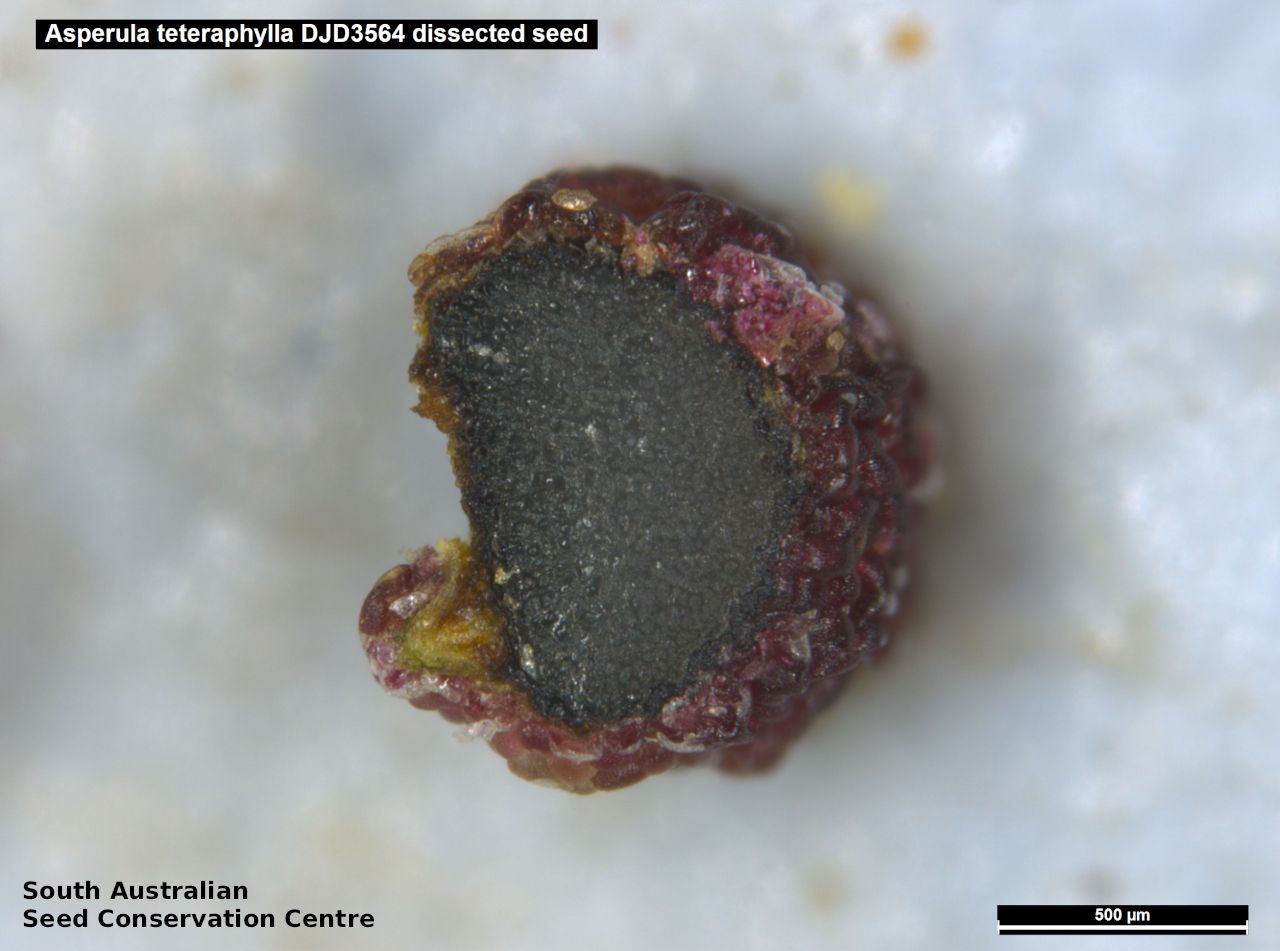
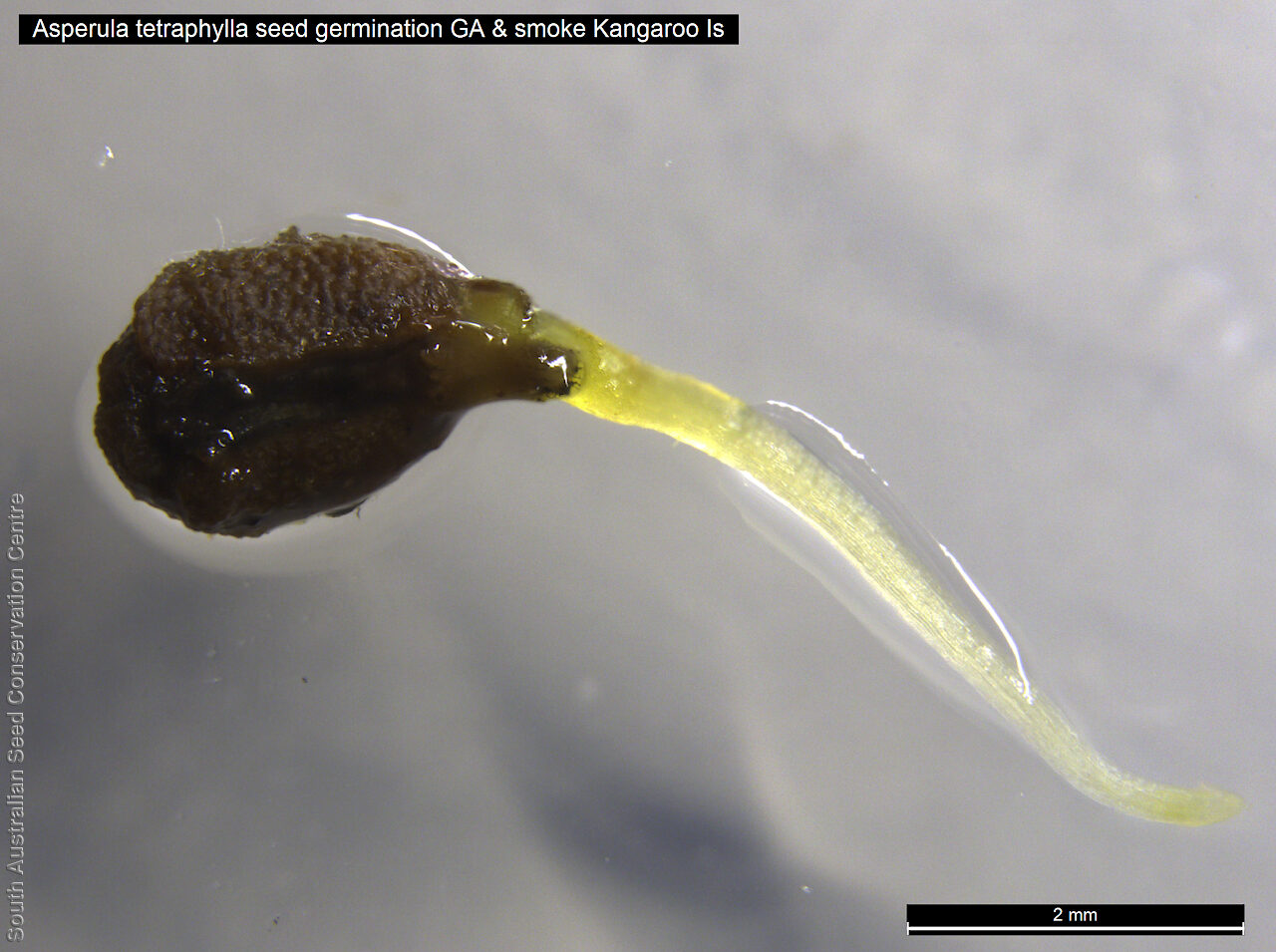
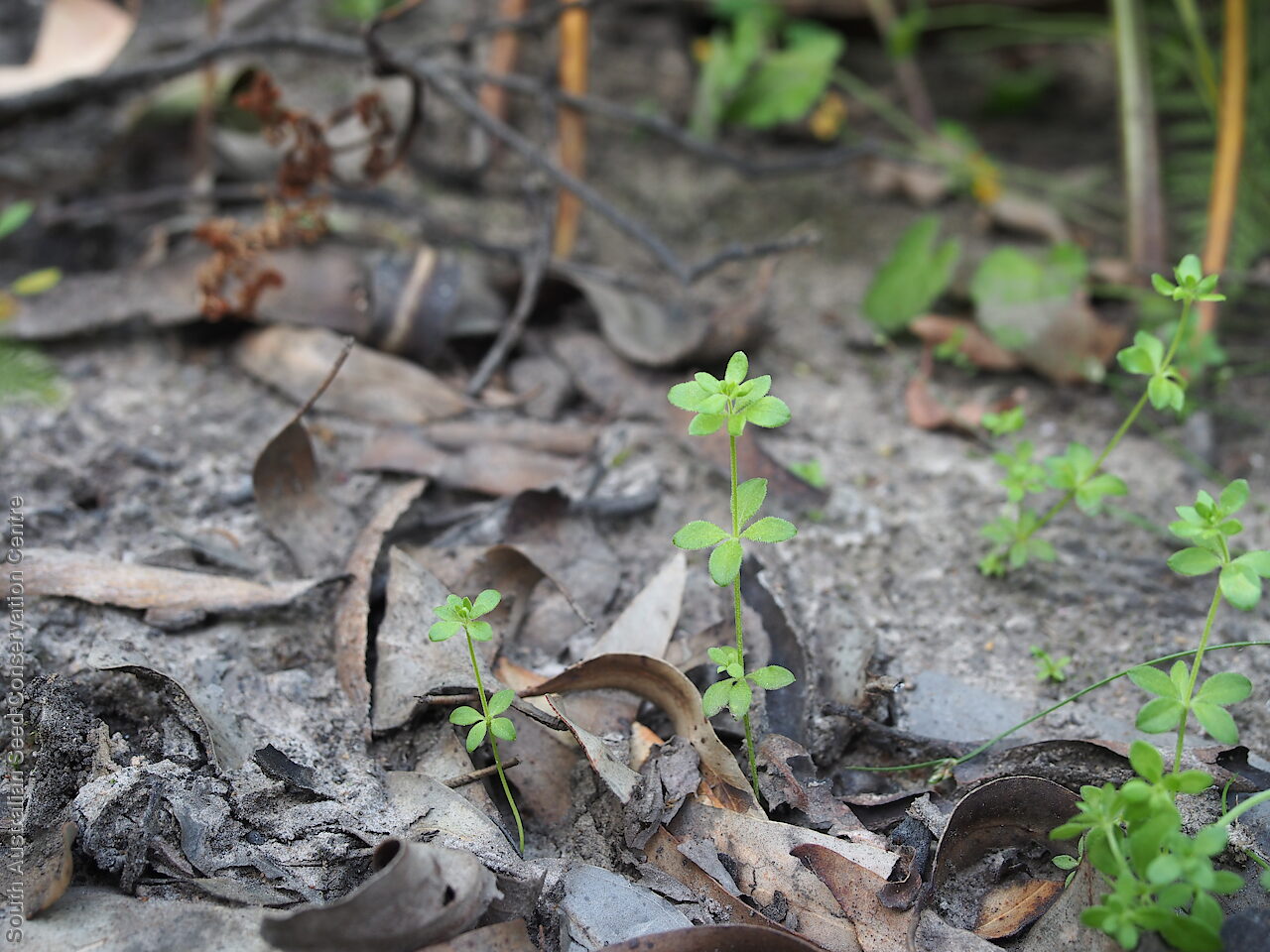
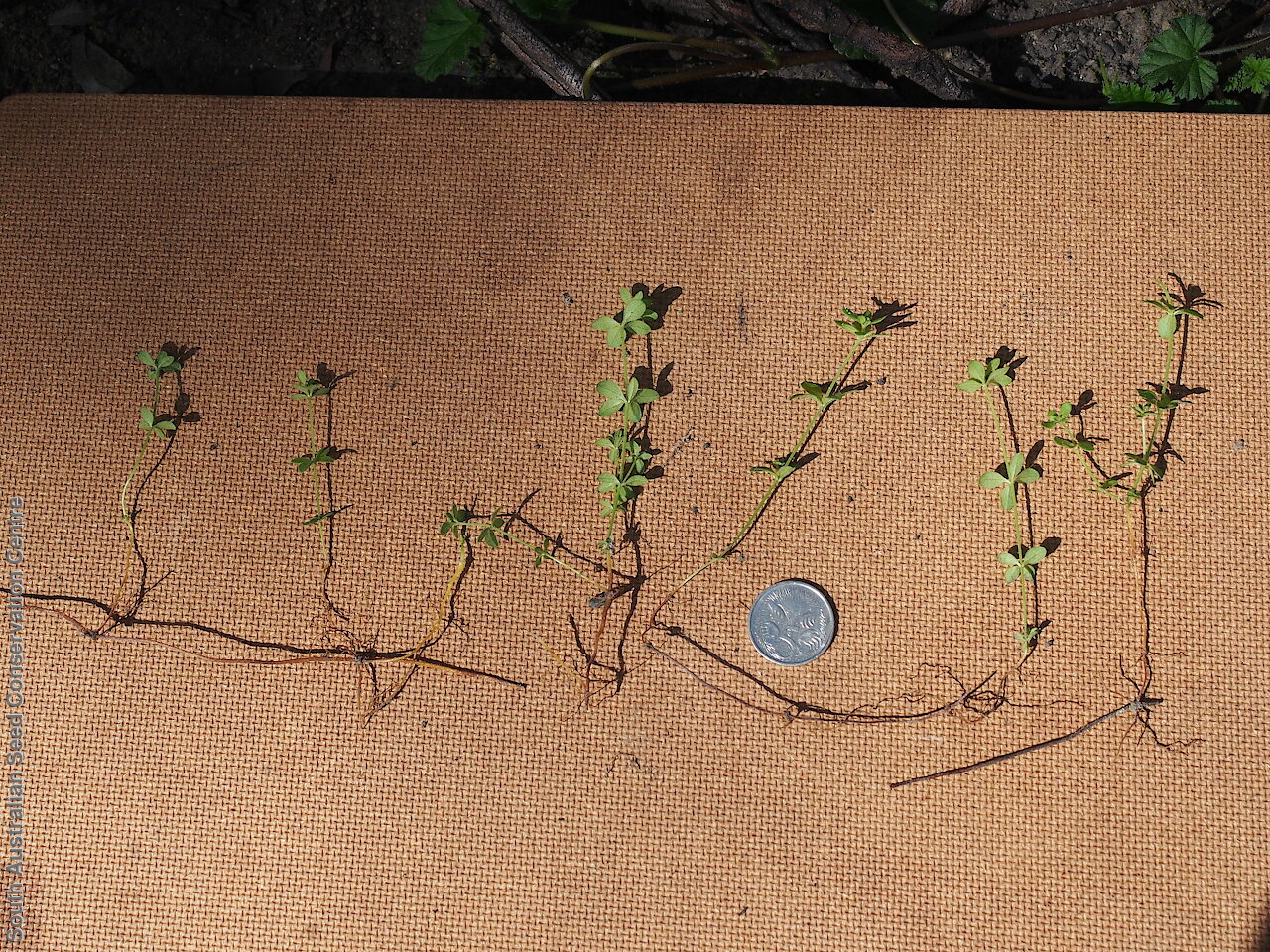


Prior names
Asperula oligantha, nom.illeg., partly
Asperula euryphylla var. tetraphylla
Asperula gunnii
Common names
Kangaroo Island Woodruff
Mountain Woodruff
Etymology
Asperula from the Latin 'asper' meaning rough, alluding to the stiff hairs on the leaves and stems. Tetraphylla from the Greek 'tetra' meaning four and 'phyllon' meaning leaf, referring to the leaves in whorls of four.
Distribution and status
Endemic to South Australia and found only on the western side of Kangaroo Island, forming mats on heavy silts and clay soils on banks of the ox-bows or swales, that form off the main river channel; mostly likely be inundated during high flow. Native. Very rare in South Australia.
Herbarium region: Kangaroo Island
NRM region: Kangaroo Island
AVH map: SA distribution map (external link)
Plant description
Erect to decumbent perennial with slender stems to 10 cm long, sparingly branched and sparsely covered in short hairs. Leaves covered in short hairs are in whorls of 4, broad-elliptic, broad-ovate or rotund to 6 mm long and 6 mm wide, tapering strongly at base; thin to slightly fleshy; margin flat, recurved or narrowly revolute. Inflorescences terminal clusters with numerous white flowers, shorter than the leaves. Flowering between September and January. Fruits are brown reniform fruit to 3 mm long, rugose.
Seed collection and propagation
Collect seeds between December and January.
Collect maturing fruits by picking off the clusters that are fat and turning brown or break off stems with numerous fruit clusters. Place the fruits in a tray and leave to dry for one to two weeks. Then rub the fruits with a rubber bung to dislodge the seeds. Use a sieve to separate the unwanted material. Store the seeds with a desiccant such as dried silica beads or dry rice, in an air tight container in a cool and dry place.
Fire response
Only re-sprouting individuals observed at three localities surveyed (Upper North West River, Stun Sail Boom River, Rocky River). No seedlings observed amongst these small populations
Longevity: >10 years
Time to flowering: 1 year for re-sprouting plants
Recovery work
In 2020-2021 this species was assessed post-fire. Further populations will be assessed and seeds collected on the western side of Kangaroo Island in 2021–2022. Germination screening testing the response to fire cues will be undertaken in 2021. Plants are being propagated from multiple populations for establishment in a Seed Production Area on Kangaroo Island. This project work was undertaken with funding awarded under Greening Australia's Project Phoenix.
| Location | No. of seeds (weight grams) | Number of plants | Date collected | Collection number Collection location | Date stored | % Viability | Storage temperature |
|---|---|---|---|---|---|---|---|
| BGA MSB | 1,450 (2 g) 1,450 (2 g) | 50+ | 17-Jan-2017 | DJD3564 Kangaroo Island | 28-Jun-2021 | 100% | -18°C |
| BGA | 200 (0.324 g) | ~20 | 27-Jan-2022 | Rocky River Kangaroo Island | 7-Jul-2022 | 100% | -18°C |
| BGA | 1,700 (2.820 g) | 30+ | 27-Jan-2022 | Stunsail Boom Kangaroo Island | 7-Jul-2022 | 100% | -18°C |
| BGA | 1,300 (2.130 g) | 10 | 27-Jan-2022 | North-east River - Walsh Track Kangaroo Island | 7-Jul-2022 | 100% | -18°C |
| BGA | 171 (0.276 g) | 29-Mar-2023 | KI SPG Kangaroo Island | 20-Jun-2023 | 100% | -18°C |
Number of plants: This is the number of plants from which the seeds were collected.
Collection location: The Herbarium of South Australia's region name.
% Viability: Percentage of filled healthy seeds determined by a cut test or x-ray.